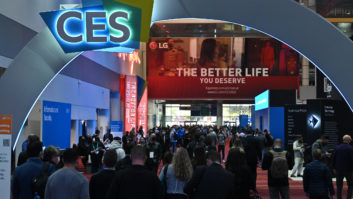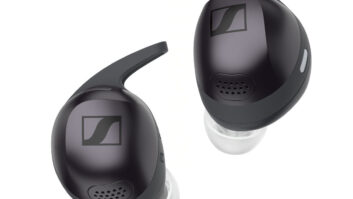I received a phone call from Bill Trawick, executive director of the NATM Buying Corp. a couple of weeks ago, appropriately the same week we at TWICE were putting our final touches on the annual TWICE Consumer Electronics Retail Registry.
After I passed my condolences to him regarding the demise of one of the group’s long-time members, American Appliance of Pennsauken, N.J. (TWICE, p. 1, April 30), Bill gave me the reason for his call. He was doing some research on independent retailers over the years and wondered if TWICE had on record the top 100 CE retailers from 1985. I told him no, since TWICE began in 1986 and then did its first Registry a couple of years later. But I told him I would search my files at home and see what I could do.
Well I dug out a copy of Home Furnishings Daily, now HFN, which is still produced by Fairchild Publications. (Some of you industry veterans remember that HFD used to cover the electronics and appliance businesses, and I used to edit that section.) I found the September 12, 1988, edition, the oldest one I have that included its annual special report called the Focus 200, the top 200 retailers of consumer electronics. I made Bill a copy of the report, began reading the paper, and went back to the future.
I’ve always said that change is the lifeblood of the consumer electronics industry, which seems to pack two or three years of developments into every calendar year. Examining that Focus 200, which listed sales for the 1987 calendar year, proved that point to me.
Inflation being what it is, the 2000 numbers will be higher than the 1987 sales figures for those companies still in business. For instance, RadioShack was No. 1 in 1987 with $2.7 billion in sales. The chain was ranked fifth in our TWICE CE Retail Registry, which we published last week, with almost $4.8 billion in sales. Surprisingly, the number of RadioShack stores in operation was about the same as in 1987.
The No. 1 chain in 2000 was Best Buy, with more than $13 billion in CE sales generated by 411 stores nationwide. (More about that $13 billion later on.) In 1987, Best Buy ranked No. 16, operated 40 stores and had sales of a comparatively paltry $306 million.
Of course it was the then-familiar names of chains that are no longer with us that really made an impression. We all know about the dramatic turnover in this business, but anyway, here are some dear departed chains and their ’87 sales rankings: Montgomery Ward (6); Silo (10); Curtis Mathes (13); The Federated Group (14); Crazy Eddie (15); Tandy Name Brand (18); Lechmere (19); and Fretter (24). And that’s only the top 25 and doesn’t include Newmark & Lewis, Luskin’s, Trader Horn, Macy’s, etc., etc., etc.
In this week’s issue of TWICE, a report on buying groups (see p. 4) illustrates the notion that as retail turnover happens, other dealers benefit. The groups all agreed that the demise of Montgomery Ward and the exit of Circuit City from the appliance business have benefited them greatly, especially through the soft economy we are experiencing.
I told you to remember that $13 billion sales figure of Best Buy for last year. According to the old HFD Focus 200 report, sales of the top 200 retailers of 1986 were $22.6 billion, and in 1987 it was $24.4 billion. For 2000, TWICE estimated the top 100’s annual sales at $86.5 billion.
Yes, the rich are getting richer. Is that the only reason why sales of top retailers almost quadrupled in 14 years? It’s hardly higher profit margins. Many of the new technologies that have been introduced since 1987 — home satellite receivers, computers, handheld computers, CD recorders and DVD to name but a few — have all expanded the marketplace.
The top chains in this business are doing more business than ever before. But the surprising thing, which is confirmed by our buying group report and comments from appliance dealers at the Kitchen & Bath Show, small independent dealers are doing well. It’s the guys in the middle, as usual, who are getting squeezed.
So in certain ways — retail consolidation and new technology, which creates more product categories — this industry really hasn’t changed too much over the years. That’s one constant in a sea of change.













